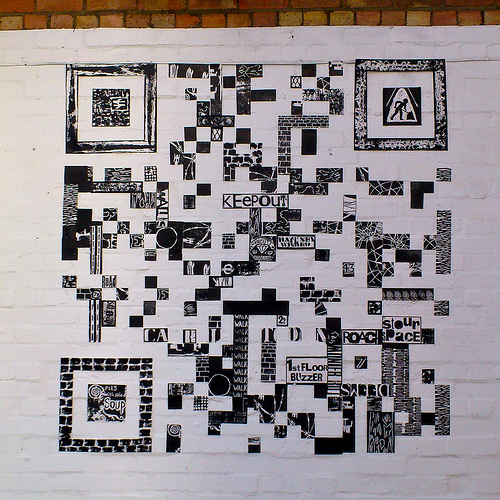Part Three: Production and Structures
36 Technology, Time, and Space
sytaffel

There is a long history exploring the relationship between technology and the ways that people experience time and space. Early theorists to explore this relationship include French philosopher Henri Bergson and German sociologist Georg Simmel. Writing at the start of the 20th Century, Simmel was particularly taken by how the invention of the pocketwatch was crucial to the structuring of time within the newly industrialised cities, how the pocketwatch had allowed time to be quantified in a far more precise way than previous technologies, and how this had ramifications for the emerging industrial economy. In a famous essay entitled The Metropolis and Mental Life, Simmel writes:
If all clocks and watches in Berlin would suddenly go wrong in different ways, even if only by one hour, all economic life and communication of the city would be disrupted for a long time. In addition an apparently mere external factor: long distances, would make all waiting and broken appointments result in an ill-afforded waste of time. Thus, the technique of metropolitan life is unimaginable without the most punctual integration of all activities and mutual relations into a stable and impersonal time schedule.

http://www.esperdy.net/wp-content/uploads/2009/09/Simmel_21.pdf
Thinking about the relationships between technology, time, and space returns us to one of the more interesting aspects of Marshall McLuhan’s thought; technology defines how we collectively understand time and space. This video below from 1967 is a useful introduction to McLuhan’s thoughts about some of the ways that our technological relationships affect how we perceive time and space. Whilst it contains some rather wild claims, especially pertaining to how hardware will disappear, it proves a useful starting point for thinking about technology time and space.
Marshall McLuhan – Picnic in Space
While McLuhan’s arguments are often intriguing but somewhat slippery and lacking in the type of rigorous analysis typical of academic scholarship, James Carey’s essay ‘Technology and Ideology: The Case of the Telegraph’ explores similar themes but in a more traditional style. Carey gives a detailed history of the telegraph, looking at the way that the telegraph transformed the speed at which information could travel, and was thus a major driver of economic changes which resulted from the change in the way that people could act in space and understood time. Indeed, Carey argues that the telegraph was a pivotal technology which led to the introduction of standardised time zones:
Standard time zones were established because in the eyes of some they were necessary. They were established, to return to the point of this chapter, because of the technological power of the telegraph. Time was sent via the telegraph wire; but today, thanks to technical improvements, it is sent via radio waves from the Naval observatory in Maryland. The telegraph could send time faster than a railroad car could move; and therefore it facilitated the temporal coordination and integration of the entire system. Once that was possible, the new definitions of time could be used by industry and government to control and coordinate activity across the country, infiltrate into the practical consciousness of ordinary men and women, and uproot older notions of rhythm and temporality.
Carey p19
Carey – Technology and Ideology: The Case of the Telegraph http://www9.georgetown.edu/faculty/irvinem/theory/Carey-TechnologyandIdeology.pdf
Moving on to think about some of the spatio-temporal consequences of contemporary technologies, we are confronted with the ways that globalised (although not global in a unified and totalising way, as the enduring digital divisions entail) networks of computers have ushered in a what Spanish sociologist Manuel Castells (1996) has called the space of flows and timeless time. Paul Virillio provides a provocative perspective within these debates, in which he somewhat counterintuitively argues that:
The very word “globalization” is a fake. There is no such thing as globalization, there is only virtualization. What is being effectively globalized by instantaneity is time. Everything now happens within the perspective of real time. Paul Virillio – Speed and Information: Cyberspace Alarm http://www.ctheory.net/articles.aspx?id=72
Understanding the ways that real-time computational networks now control various elements of our social and cultural infrastructures (such as large amounts of the financial sector) bring Virillio to a discussion of what types of new accident are made possible by the contemporary technological assemblage. Just as there were no car or plane crashes before the respective invention of the automobile and the aeroplane, Virillio ponders the notion of an information bomb which could be unleashed by the collective failure of the computational systems which comprise our contemporary technological environment.
A pivotal element of digital computational systems, and one which arguably distinguishes them from previous technological ensembles, is the fact that these systems feature software; executable code which is capable of making programmed decisions based on real-time information which feeds back through the software. This executable nature of the algorithms within software has been described by Adrian Mackenzie (2006) as a mode of secondary agency, an active agential capability which is distinct from that of a human, but which is also markedly different from what we encounter with other forms of technology.

This focus on the unique properties of software, and how the algorithms of executable code are shaping contemporary (especially urban) space is the focus of a strand of software studies exemplified by Rob Kitchin and Martin Dodge’s work around Code/Space, which is a term they apply to contemporary spaces which are not simply mediated by software, but where the space simply could not function without the agential capacities of software. Within their book titled Code/Space, they explore case studies such as the airports, where the volume of human and nonhuman traffic simply could not be functionally dealt with without the specific affordances offered by software systems.
Rob Kitchin and Martin Dodge – Code/Space: Society Software and Space http://personalpages.manchester.ac.uk/staff/m.dodge/cybergeography/codespace/
Sam Kinsley – Review of Code/Space http://www.samkinsley.com/2013/07/05/review-of-codespace-by-kitchin-dodge/
Discussion
- What technologies introduced in the past 50 years have affected the way that New Zealand and New Zealanders relate to the rest of the world?
- How does having a device which means you can constantly be contacted, and are usually able to access the Internet , alter the way that you experience time and space?
- What would you consider to be the positive and negative outcomes of being always on – being constantly connected to digital networks?

